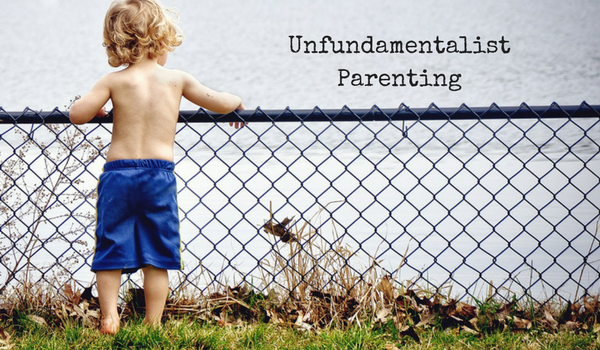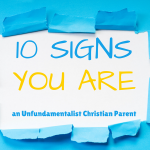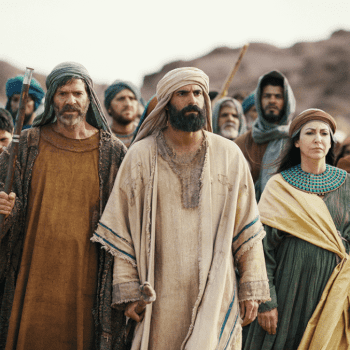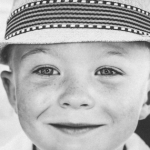Seatbelts, helmets, goggles, floaties, face masks, knee pads.
Safety first.
These are measures of protection we afford ourselves and our children – before they ever sit down on a bike or jump in a pool. But these devices, the seatbelts and the floaties, aren’t there to prevent one from having the experience of a car ride or an afternoon swim. They exist to foster a safe experience of the minivan and the deep end. Safety first. We seek out and invent these devices to uphold and encase our bodies because our physical existence is greatly valued. As it should be.
But what about our spiritual existence and its protection?
I grew up in a Southern Baptist church in small-town Alabama. One of the things I remember participating in as a kid was “sword drill.” I’d gear gear up, standing with closed bible (the sword) in hand, waiting for the countdown and listening for the scripture reference and BOOM – I was off, frantically flipping the crunchy thin pages to find the verses called out in hopes that I would locate it before everyone else. The purpose of all of it? To hone my sword-wielding abilities, to be able to expertly play with the sharpest object in my “armor of God toolkit,” to be “ready to give a defense” when my faith was questioned.
While I am eternally grateful for my upbringing I realized something as I began studying the Bible more closely and in academic settings – swords are sharp and very heavy. And I had no idea what I was playing with in those drills. I was never told, “Hey, this thing that you have in your hands – this is ancient sacred text, it’s complex, it’s dense, it’s been irresponsibly used to hurt people for hundreds of years so to avoid that, use it wisely.” No. I was taught to use the Bible before I was ever told what it was.
I wasn’t allowed to watch the Nickelodeon cartoon, “Rugrats” (remember that, 90s kids?) until the 6th Grade because Angelica was “disrespectful.” Yet, by that time, I had memorized the stories of David and Bathsheba, of God drowning humanity in a flood, and of Jesus’s very public and gruesome execution. See the disconnect? More care and caution was given to Saturday morning cartoons than to the images of God to which I was exposed. It’s the pattern of American Christianity and it deserves attention because…
…the Bible is not a children’s book. It’s a brash thing to say, and perhaps an obvious thing but I’ll say it again:
“The Bible is not a children’s book.”
Let me explain.

Image: Pixabay
The reality is that the Bible is an ancient compilation of myth, poetry, law, and letter, strategically selected and edited. It was a library once restricted to the interpretive minds of those in power, later popularized and translated into languages for all to read and hear. it is text necessarily bound to its context of time and place (as we are bound to the same). Narratively, it is the story of various people groups trying to sort out their place in the world and how God fits into all of that. It is the diary of their wrestlings with questions of who, where, and why, all directed at God, and of their best attempts at providing themselves answers to make sense of those wonderings. And they are questions and wonderings we still have today. It’s an attempt to understand the Divine and our own humanity. This is what the Bible is.
The Bible is also a collection of texts which seem to depict, on the surface, severe and holy punishment for human mistakes dealt out by a male deity who asks a father to murder his child, orders armies to slaughter indigenous peoples, and plays favorites from a distance. This is what I mean when I say, “The Bible is not a children’s book.” These are not simply black and red words on white crunchy-thin pages. They are wonderings about God, wonderings that often come to dangerous and hurtful conclusions that I cannot stand by. They are wonderings and conclusions that provide an image of God that I don’t want for the children in my care. I understand them. But they are not my conclusions.
At this point you may be thinking, “Yeah, but all those things – those are just on the surface. If we just read closer, deeper…”
Yes. But one has to possess the cognitive abilities to do that – to process the beautiful subtlety of various literary forms, contextualize historical and cultural realities, and understand nebulous concepts to mine that profundity from much of the text. We cannot expect young children to have the capacity to do that yet. Not until age 11-12 can children truly begin to process heavily abstract concepts, understand time in a more complex way, and translate historic events to their every-day lives.
This is why Disney World works; why Santa Claus, the Easter Bunny and magic work. It’s because developmentally, children do not fully distinguish between fantasy and reality. It’s why, when you see 3 different Cinderella’s all in one, long day at the Magic Kingdom, your child FULLY believes that every single one of those girls is the real Cinderella. Your child doesn’t see beyond “the surface” to the 25 yr old in a costume, wig, and heavy makeup who also waits tables part-time and lives in the apartments down the road with her two best friends. They see the same character from the cartoons. Literally…2D and 3D are no different in their mind.
So when you read a child a story that says, “God told Abraham to take his son Isaac to the mountaintop and sacrifice him” do you know what that means to a child? It means that God ACTUALLY told Abraham to kill his kid. Nothing more, nothing less. It is unfair to expect our children to walk away with an understanding beyond what they hear; thus we have a responsibility to them to speak beauty, truth, and goodness about God, ourselves, and others, and to give them clear and healthy images of God – and we have the freedom (truly, we do) to use the best tools available to us with which to do that.
As a Children’s Pastor, I see it as my job to help strap on spiritual knee pads (“God is love and is bigger than we can imagine”), seatbelts (“People have been asking questions about God for forever – our ideas about God change, but God does not”), and helmets (“You are good, and safe, and made in the image of God – so is everyone else”).
For these most precious, concrete minds, these concepts will be difficult to see through much of the Biblical narrative. But I’ve come to trust that God is truly the “Ground of All Being” (or Being Itself, Tillich), and I find myself free to explore images of God anywhere and everywhere, in nature, in children’s literature, in active relationship with others.
The Bible is ONE tool we have to explore ideas of God. ONE – out of millions. When your God is bigger than the ONE resource, the world opens up and there is no obligation to ensure that a 6 year old knows the potentially damaging story of the great flood. After all, it isn’t a fair expectation that they learn from that particular story that God is love. (Quite frankly, it doesn’t seem to be a fair expectation of anyone to get that from the text). It is our responsibility as adults to give them the ground on which to stand as they begin to explore ancient stories and letters, to give them the addition and subtraction of our faith, as one of my mentors puts it, so that they can build upon it to later learn geometry, algebra, and calculus.
And simply giving them the basics of “You are good. God is love. You and everyone else are made in the image of God” is enough.
I had a mother recently ask me “What is the spiritual work I should be doing with my children?” (ages 1 & 4). My response was this, “Children develop their earliest notions of the Divine directly from their parents. Being a loving mother is the spiritual work.”
A child’s immediate reality is all they know – meet them there, validate that reality, and show them God.
Get a free download of a Christian parenting manifesto that helps us guide children into healthy spirituality + the most helpful parenting resources with progressive values.
















